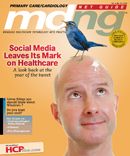Publication
Article
MDNG Primary Care
Financial Health Check Up: Corralling Theft in Medical Practices
Author(s):
There's a great scene in the movie The Big Chill where the main characters are having a discussion on the topic of rationalizations. One individual comments that he doesn't know anyone who could get through the day without two or three juicy rationalizations.
There’s a great scene in the movie The Big Chill where the main characters are having a discussion on the topic of rationalizations. One individual comments that he doesn’t know anyone who could get through the day without two or three juicy rationalizations. That may be true. But when a rationalization involves taking things from the ofï¬ce or workplace, and that ofï¬ce just happens to be your medical practice, it becomes theft, no matter how you rationalize it.
“It’s a prevalent issue,” says Jay Sattler, CPA with the ï¬ rm of Blum Shapiro (www.blumshapiro.com), regarding the issue of fraud and theft in medical practices. “I would say it has become more prevalent over the last several years, and I would go so far as to say there’s a link between these types of matters and the state of the economy.” For some people, of course, this makes it easier to rationalize the disappearance of everything from ofï¬ ce supplies to medication samples. But it’s still theft.
Justifying the Action
Timothy Dimoff, CPP, is the founder and president of SACS Consulting, Inc (www.sacsconsulting.com), a high-risk security consulting ï¬ rm. He agrees that the current state of the economy has produced an upswing in internal crime. The justiï¬ cations used by medical practice employees range from, “The doctor makes good money so she can afford it,” to, “I’m wearing two hats now that we’ve reduced staff, so if I take a few reams of paper, it’s no big deal.”
But it is a big deal, says Dimoff. And it becomes an even bigger deal when pharmaceuticals become the target of choice. Employees see these medication samples left by pharmaceutical reps as “free,” so they justify it to themselves that they’re not really stealing. Everything from cold tablets on up is seen as fair game and brought home so staff don’t have to spend money to purchase these items. But this turns into an even bigger issue when staff pilfer potentially dangerous medications.
“We have people working in [medical] ofï¬ ces who have addictions to drugs; addictions to painkillers and antidepressants,” Dimoff explains. “Why should they pay for the prescriptions when they can get samples for free? And some people who are hurting for money are stealing the pharmaceuticals and selling them.”
Locking the Cabinet
So, how do you combat the problem? Dimoff suggests having a set, known process for every procedure at the practice. When pharmaceutical samples are dropped off, register them, and then any time a sample is removed and given to a patient, make certain it’s noted in a log. In other words, keep a tight inventory of all pharmaceutical products. “If there’s expected accountability, and you have a process in place, you decrease the opportunity for deviation tremendously,” Dimoff says. “But if it’s a free-for-all, people will look at the box in the corner ï¬ lled with samples as something they can have any time they want.”
Sattler agrees, and suggests that a system of checks and balances should exist in all areas of a medical practice. For example, he says that the lack of segregation of duties is one of the biggest red fl ag areas. When one worker has too much control, too much responsibility, there’s a greater probability that fraud and theft will take place. Mitigate that probability by cross-training employees. “When one person can spend some time during the year performing another person’s duties, you can avoid some of these issues,” says Sattler.
Know your Employees
Conducting thorough background checks prior to hiring staff is important, but that doesn’t mean you stop paying attention to your employees once they’re hired. Sattler explains that it’s important to watch for telltale signs, such as employees, or even physician colleagues, who may be experiencing ï¬ nancial difï¬ culties, living beyond their means, or exhibiting changes in lifestyle and behavior patterns.
“It could be an ofï¬ ce manager who, for the last ï¬ ve years, has refused to take more than two vacation days in a row,” Sattler says. “That’s a huge red fl ag. Theft or fraud is rarely ever done in conjunction with another person in the ofï¬ ce. So when you have someone who refuses to take something as simple as more than a couple of days of vacation in a row, that may be because that person needs to be in the ofï¬ ce to keep the theft or the transparency going so it isn’t detected.”
Process, procedure, and accountability, says Dimoff, are critical to reducing the likelihood of fraud and theft. Fostering a culture where employees know what is expected of them will, in turn, prompt them to care about their work environment.
Ed Rabinowitz is a veteran healthcare journalist based in Bangor, PA





